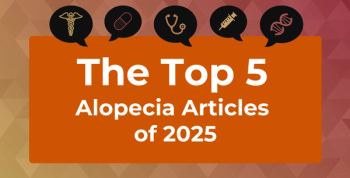
Parental Age May Be Linked With Childhood Cancer Risk, but More Research Is Needed
A recent meta-analysis aimed to clarify the relationship between parental age and solid tumor pediatric cancers, but more studies are necessary to overcome the limitations of available research.
Past studies have linked older parental age to pediatric
The analysis, which was published in JNCI Cancer Spectrum, used population-based studies to minimize potential selection bias that comes with formats such as questionnaire-based case-control studies. Researchers pulled data from 15 studies including 10 childhood solid tumor types, all sourced from Medline and Embase searches for registry-based studies on solid tumors and parental age. The studies included a total of 30,323 cases and 3,499,934 controls.
Researchers identified several cancer types that appear to be associated with maternal age. A 5-year increase in maternal age was linked to greater odds of central nervous system (CNS) tumors (odds ratio [OR], 1.07; 95% CI, 1.04-1.10); ependymoma (OR, 1.17; 95% CI, 1.07-1.29); astrocytoma (OR, 1.10; 95% CI, 1.05-1.15); rhabdomyosarcoma (OR, 1.13; 95% CI, 1.01-1.26); and germ cell tumors (OR, 1.06; 95% CI, 1.00-1.12).
When the increased odds of solid tumors and lymphoma were combined, a 5-year increase in maternal age was associated with an OR of 1.05 (95% CI, 1.03-1.07).
The relationship between paternal age and childhood cancers was also explored, and a 5-year age increase was only significantly associated with a greater risk of non-Hodgkin’s lymphoma (OR, 1.06; 95% CI, 1.00-1.12) in this dataset. When the odds of pediatric lymphoma and solid tumors were combined, a 5-year increase in paternal age had an OR of 1.02 (95% CI, 1.02-1.04).
“At present there are a limited number of registry-based studies of paternal age available for analysis, and certain registries do not contain paternal age data,” the authors wrote, “thus it is possible that there may be an association that is undetectable with current literature.” Unraveling the distinct associations between maternal and paternal age at birth is also difficult considering the strong correlation between maternal age and paternal age at birth, the authors noted.
The lack of association between paternal age and age at birth in most cancer types surprised researchers, as increased paternal age is known to increase the likelihood of mutations in the child. Fathers also typically transmit more mutations than mothers, they added. “As the mechanism through which paternal age may influence childhood cancer risk is both plausible and well understood, the abundance of null findings in this analysis was contrary to expectation,” the authors wrote.
The registry-based nature of the study was a significant strength, but it was limited by the rarity of some of the included cancer types, as well as the limited number of registry-based studies on certain cancer types, among other factors.
Overall, the findings suggest there is a link between older maternal age and cancers other than leukemia. Despite the difficulties of uncovering a possible link between paternal age and childhood cancers, the data also suggest that there may be an association to be discovered. Future research efforts could explore the relationship further and aim to analyze potential links between mutation profiles and parental age.
Reference
Domingues A, Moore KJ, Sample J, Kharoud H, Marcotte EL, Spector LG. Parental age and childhood lymphoma and solid tumor risk: A literature review and meta-analysis. JNCI Cancer Spectr. Published online May 27, 2022. doi:10.1093/jncics/pkac040
Newsletter
Stay ahead of policy, cost, and value—subscribe to AJMC for expert insights at the intersection of clinical care and health economics.








































